For generations, the Ivy League academies of America have arguably been considered some of the finest and most prestigious academic academies in the world. The “Ancient Eight” as they are often called have been home to some of history’s most prominent and prolific men and women, who have taken their respective industries by storm and created empires that have helped to forge America’s way into what is now globally considered the world’s most powerful country.
For the proud few who are accepted and educated at one or more of these institutions, the prospects of finding a job post graduation are of little concern. While, today, many may argue that you don’t need a college education to thrive, it certainly doesn’t harm you to be able to list one of the ancient eight on your curriculum vitae.
Primarily situated on the northeastern region of the United States; Harvard, Princeton, Yale, Brown, Columbia, Dartmouth, Cornell and the University of Pennsylvania make up the contingency that since 1954, has officially been coined as the Ivy League schools of America.
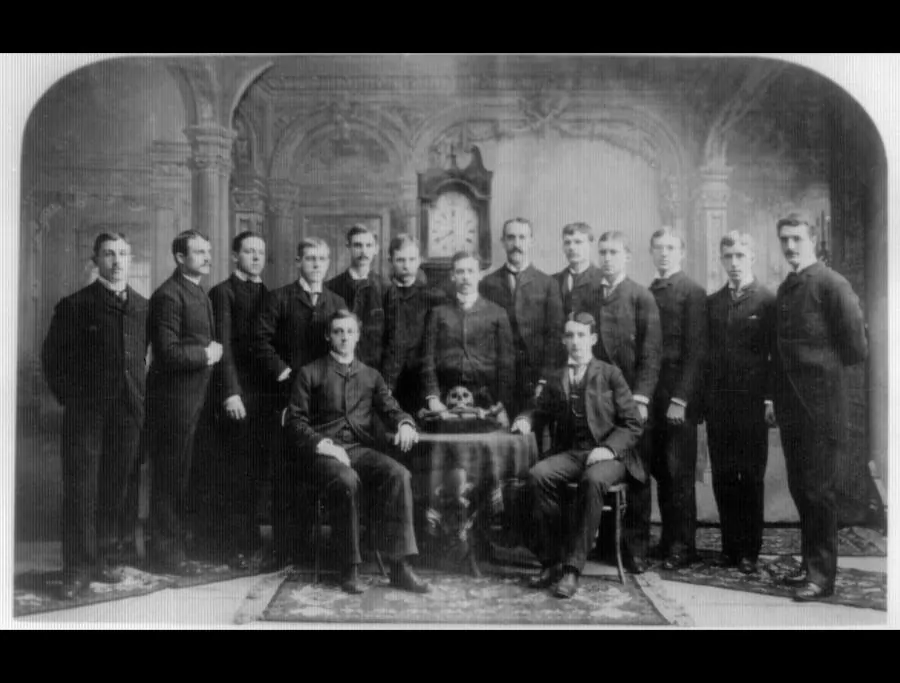
Brief Ivy League History
What many don’t realize, is that the Ivy League is actually a collegiate athletic conference and not just a term used to describe academically enriched higher education. While the term certainly invokes thoughts of selectivity, social elitism and academic supremacy; one should not forget that it’s their athletics programs that thrusted them into this prized classification.
Although Ivy Style as we know it today was developed in the years between WWI and WWI, the term Ivy League was coined much later. In 1954, the term “Ivy League” became officially recognized by the formation of the National Collegiate Athletic Association’s Division I athletic conference. While 1954 marked the official naming of the league, historically collegiate sports have been traced back to the Native Americans who introduced us to Lacrosse which has widely been considered the first team sport in North America.
In the year 1852, as European immigrants settled in the New World, they brought with them, what is now often characterized as the “typical” prep sport; Rowing. When the crews from Harvard and Yale met in a challenge race, it quickly became one of the most prominent inter-collegiate sports in the United States well into the late 1800s, or possibly even the early 1900s. Today, just as popular amongst the Ivy League students, back in the 1800s, the sport of rowing was often the basis of many debates regarding which schools were eligible to compete on a collegiate level.
With the invention of basketball by a Canadian and the popularity of football, more teams were formed and certain standards adopted. Despite these standards, the rules of many team sports were rather loose, and thus, it became necessary for an organization to be the helm of responsibility for these collegiate games.
When US President Theodore Roosevelt was in office, as many know, he was a lover of rules and regulations. Not only did his affection for continuity apply to his presidential career, but also to the sport of Football, of which, Roosevelt was a rather big fan. In the early 20th century, President Roosevelt began to notice that football players were succumbing to repeated injuries and even deaths that prompted many educational institutions to not only discontinue official play of the sport, but even ban it from occurring on their respective properties. When Chancellor Henry MacCracken of New York University attended two meetings with President Roosevelt at the White House, he became inspired and encouraged to organize a meeting with thirteen other colleges and universities in an ongoing effort to initiate amendments to the sport of football and create very standardized rules and regulations. Then, on December 28, in the year 1905, a meeting occurred that would forever change the way inter-collegiate sports were played. Sixty two colleges and universities attended this meeting as charter members of what would be called the Intercollegiate Athletic Association of the United States. Established in 1906, the IAAUS just a few years later in 1910 would be changed and has since been called the NCAA.
As the ruling body for sports played on the collegiate level, it grew from a basic regulatory body to a group of organizations that divided its membership into various categories, thereafter known as Divisions I, II and III. It was in 1954, that Division I was officially termed the “Ivy League”, a division comprised of the ancient eight schools.
Today, the use of the phrase “Ivy League” is no longer limited to simply athletics. Now synonymous with exclusivity, selectivity and advanced learning, the Ivy League is globally considered some of the best educational institutions in the world. Of course, there are other contenders such as the University of Cambridge, the Massachusetts Institute of Technology (MIT), University of Oxford, Stanford University, McGill University, among others.
It should also be noted that recently, and for the first time, a collegiate from outside the United States was inducted into Division I or the “Ivy League”, that being Simon Fraser University in Canada. However, for the purposes of this particular article, we will focus solely on the ancient eight.
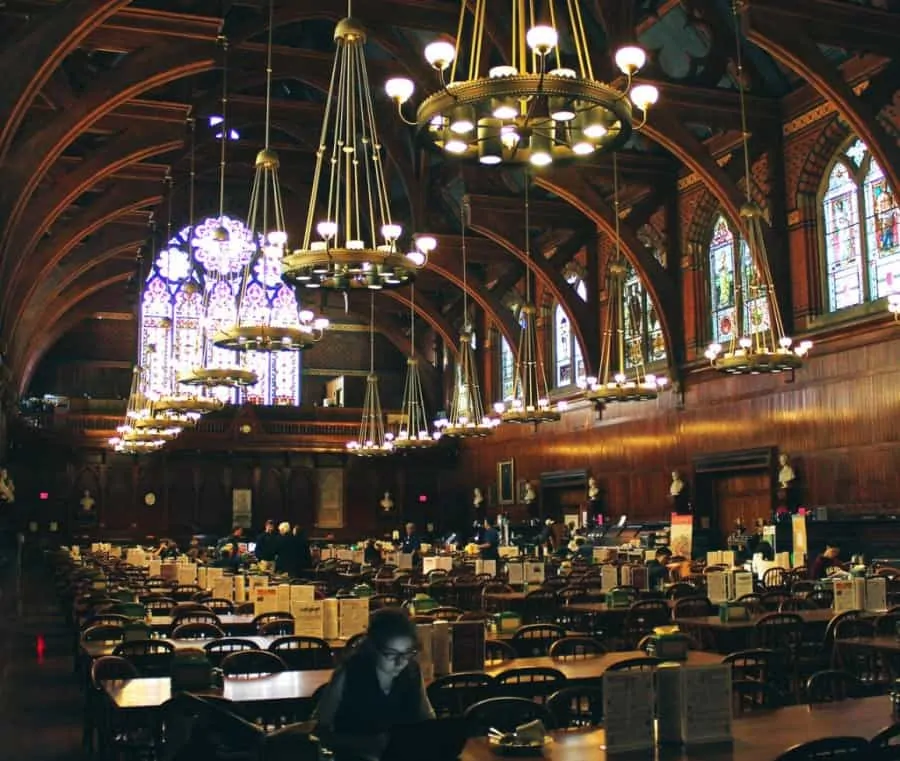
HARVARD
Harvard is bar none, one of the top academic institutions in the world, continuously maintaining a high position amongst its noble competitors. As one of the most prolific academic communities in the north east, Harvard is synonymous with everything exceptional and intriguing about the ivy league.
Well known for its undergraduate programs, Harvard College is a unique institution that remains a part of the larger Harvard University; home to a world class faculty that annually conducts notable, groundbreaking research by both its exceptional staff and committed scholars.
With a variety of faculties, Harvard excels in the business, law and medical communities, among many others. Aside from an excellent research and teaching program, what initially attracts freshmen students to Harvard College, are the Harvard Houses, where three-fourths of students live, learn, and work together with faculty, students, and grad students. These houses are well regarded for providing encroached interactions that help mold the future of America.
Situated in the “college town” of Cambridge, Massachusetts, Harvard is one of more than 50 local institutions serving a student population of more than 200,000 individuals from every US state and foreign country in the world.
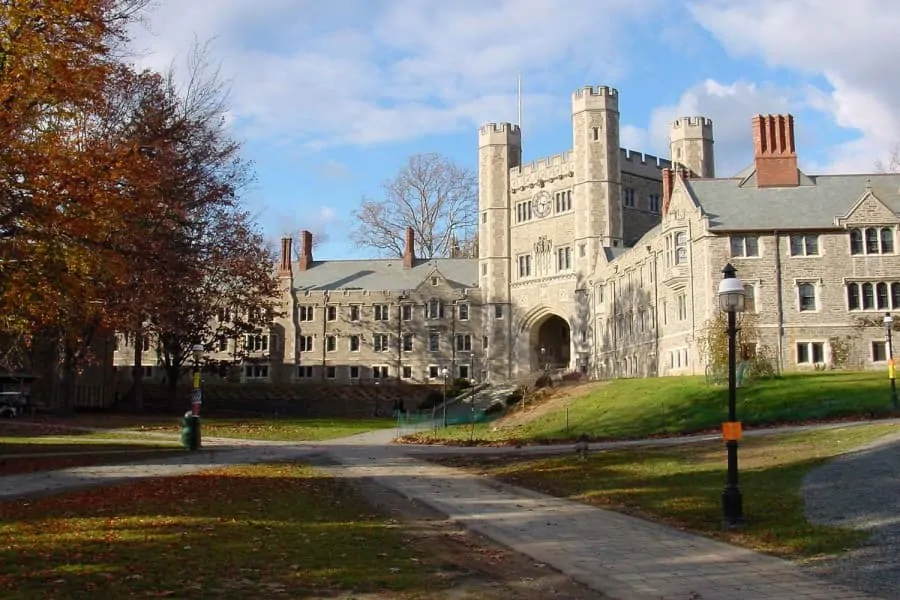
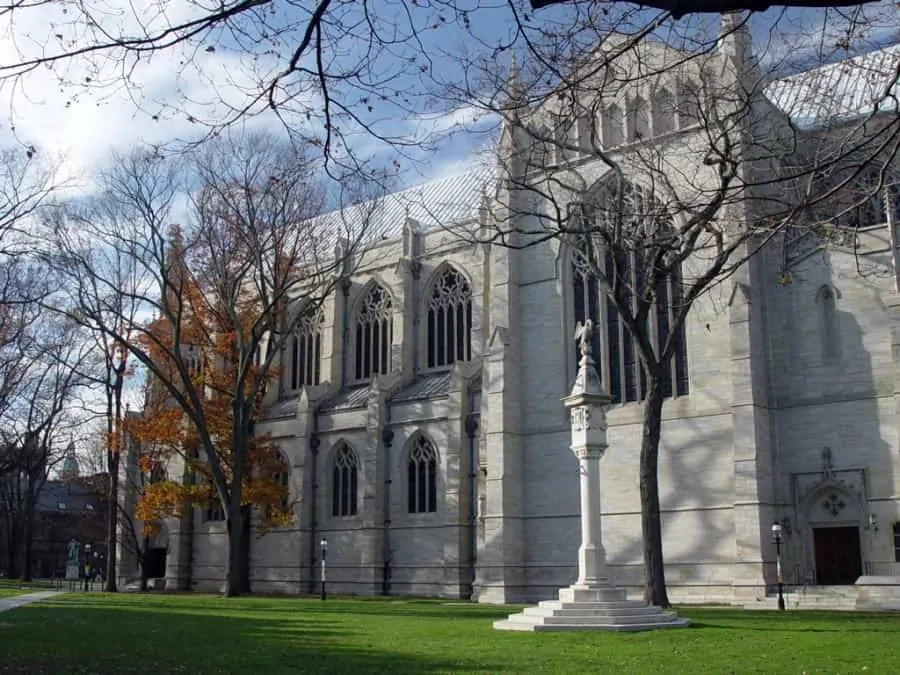
PRINCETON
Princeton University is often considered one of the trifecta, the others of which are Harvard and Yale. Focusing on addressing the challenges of the future, Princeton is often regarded as being one of the most selective universities in the world, carefully picking and choosing only the most capable scholars that high schools around the world have to offer – in an aim to maintain the highest possible standards of excellence.
Like Harvard, Princeton is also well established and offers a very unique and diverse community to both its students and faculty. One area that really does separate Princeton from its competitors is that they seem to really understand that excellence isn’t exclusive to a single category of wealth, and therefore, offer a wide variety of need-based financial aids and scholarships across all programs and faculties.
YALE
Synonymous with mystery and intrigue, Yale is a private Ivy League research university in New Haven, Connecticut. It’s the third eldest university in the United States and its history dates back to the year 1701.
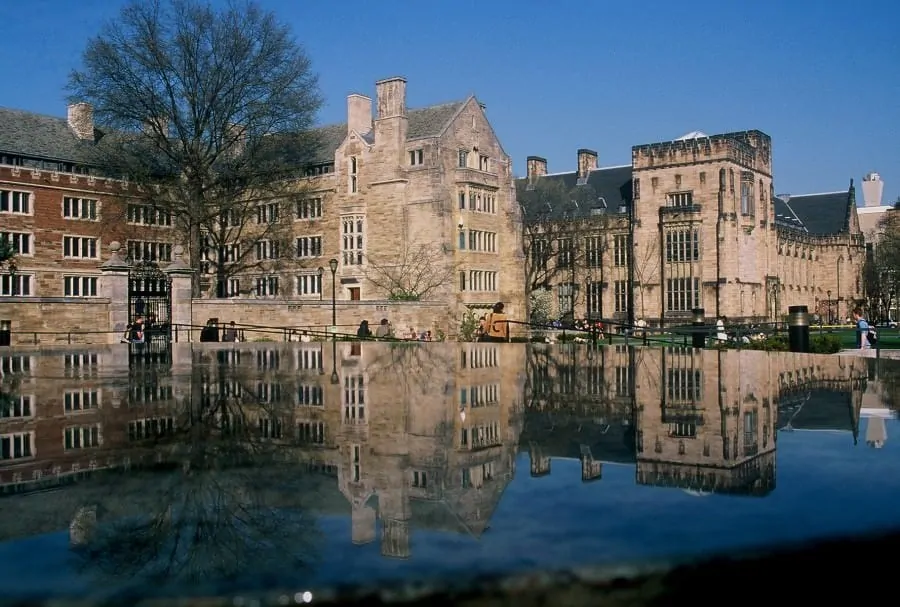
Yale is actually a parent organization of twelve school bodies comprised of the undergraduate college, the Graduate School of Arts & Sciences, as well as ten various professional schools. Governed by the Yale Corporation, each school is independently responsible for overseeing its curriculum and degree programs.
One thing that Yale has long been known for are the societies that hide beneath its walls. Many have speculated over the years as to what actually occurs on those hallowed grounds. Showcased in hollywood cinema as well as in many television documentaries, its undergraduate societies, or “secret societies” have become known the world over in comparison to many of the other Ivy League schools.
The most prominent of those is of course the Skull & Bones Society. Many have their own beliefs about what occurs within the confines of their clubhouse.
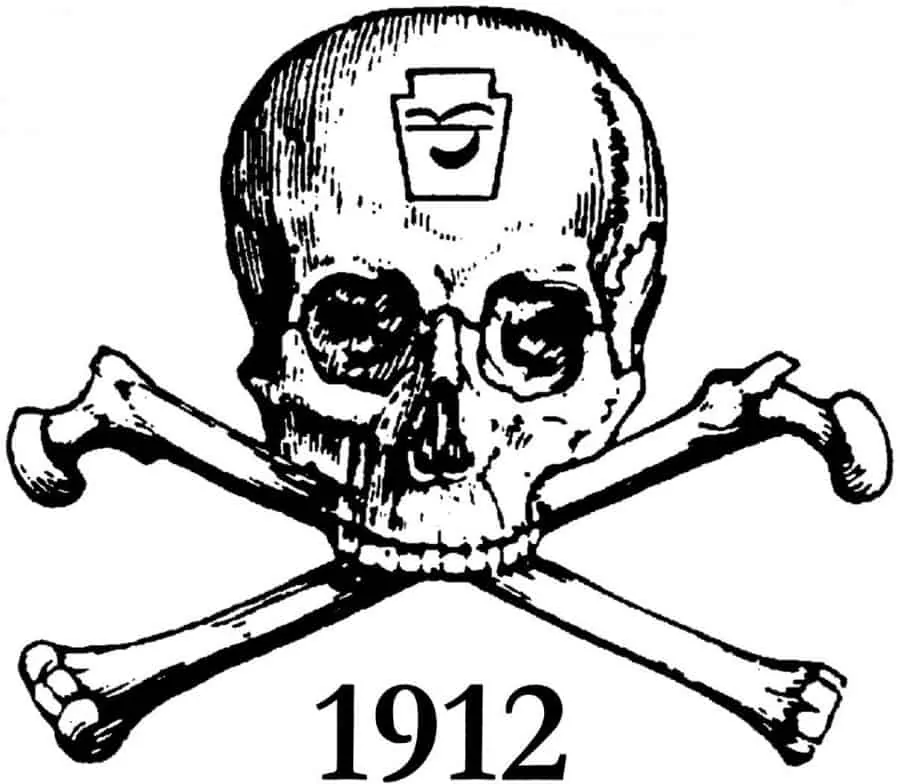
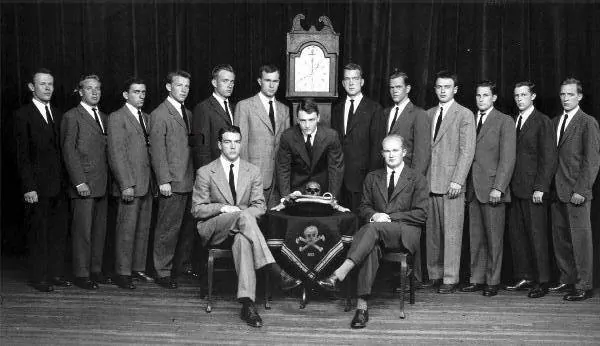
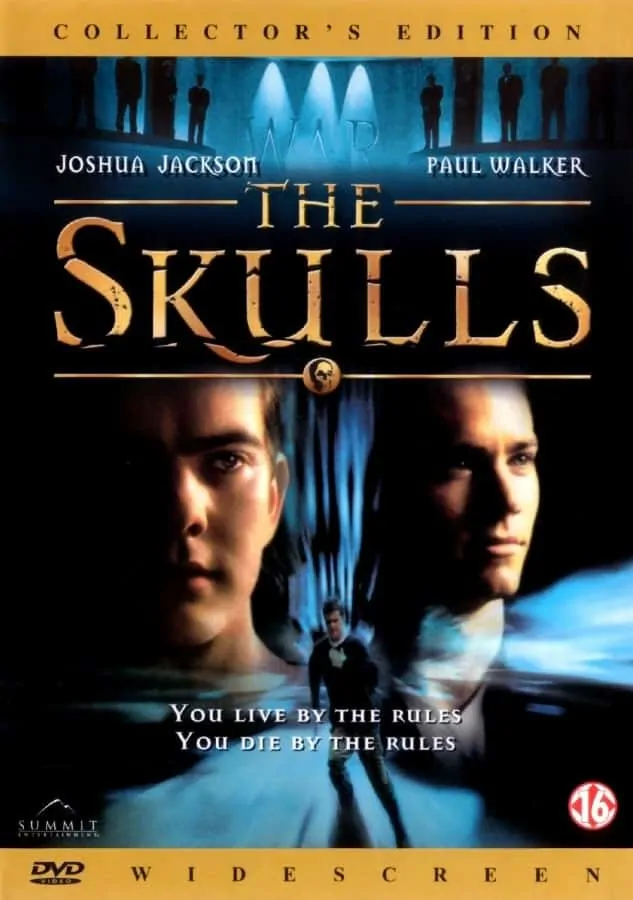
The society’s alumni organization, the Russell Trust Association, owns the real estate and oversees the society according to many historians. The society is known informally as “Bones”, and members are known as “Bonesmen”. Unlike most people who have written on the topic, I am going to choose to end the information at that, as I am of the belief that unless you have served as a member or “Bonesman”, anything you claim might as well just be fiction. Of course, it does go without saying that many of the world’s most prestigious men have been members, but despite what conspiracy theorists claim, I’m not sure I believe the society plays any more of a role in a globalist/corporatist conspiracy for world control than that of the Freemasons, the Bilderberg Group or the Illuminati. What’s your opinion?
Since its inception, Yale has been home to many notable alumni including five U.S. Presidents, 19 U.S. Supreme Court Justices, 13 living billionaires, and many foreign heads of state. 52 Nobel laureates have been affiliated with the University as students, faculty, or staff, and 230 Rhodes Scholars (the second most in the United States) graduated from the University according to Wikipedia.
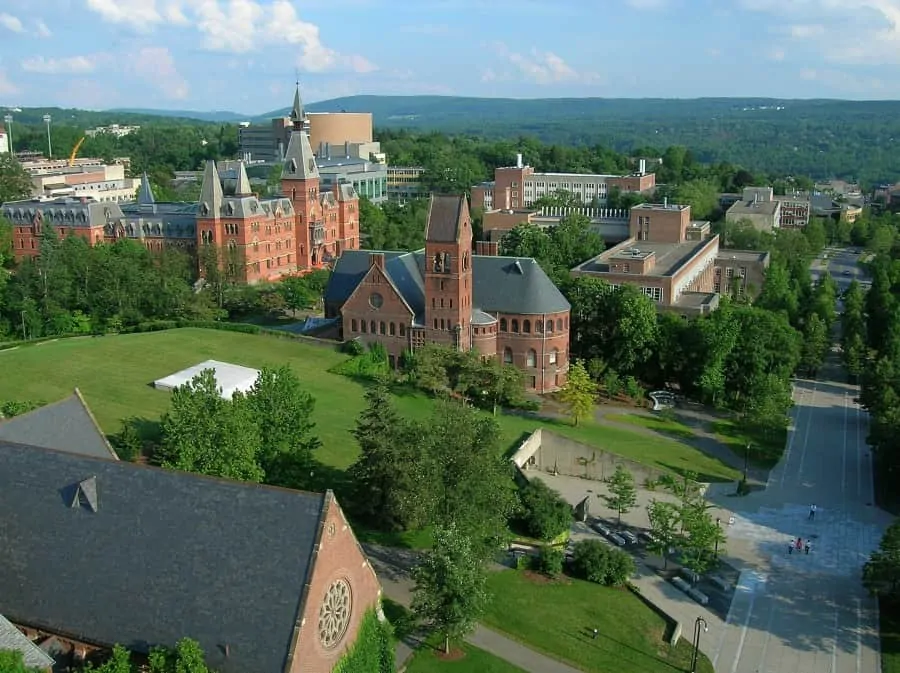
CORNELL
Another private school, Cornell is a partner of the State University of New York and a federal land-grant research university in Ithaca, New York. Founded in the mid 1800s, the university has always considered itself a jack of all trades, offering faculties in all fields of knowledge. Its founder, Ezra Cornell once said “I would found an institution where any person can find instruction in any study.”
While unconventional, especially for an ivy league institution, the University has been very successful in breeding an alumni that has been globally successful in all fields of theoretical and applied study.
Like Yale, the university is organized into a variety of independent bodies. With seven undergraduate colleges and seven graduate schools at its main campus, each faculty is independently responsible for its own admission standards and academic programs. In addition, Cornell also has two satellite medical campuses, one in the heart of New York City, and the other in Education City, Qatar.
Since its inception, Cornell has always been a non-sectarian school offering admission to students regardless of religion or race. With 245,000 living alumni, 34 Marshall Scholars, 29 Rhodes Scholars and 41 Nobel laureates, Cornell is one of the more unique and broadly accepting ivy league schools in America.
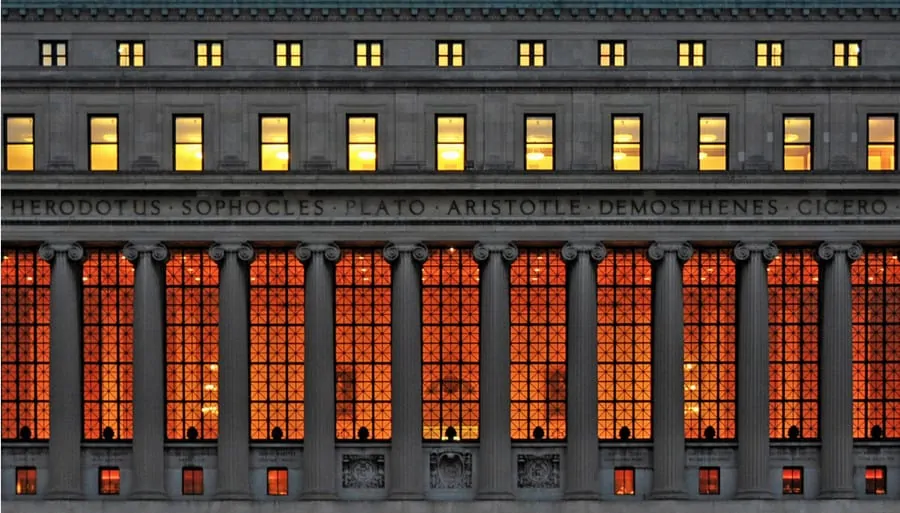
COLUMBIA
Columbia University is often heralded for its research and distinguished alumni. Perhaps not quite as notable as some of the other ivy league schools, Columbia really has a broad presence across all industries rather than a more concentric one. It’s not difficult to find a Columbia graduate in most major US companies, and in most cases, while they may not be at the very top of the corporate ladder, they still rank high in the family tree. It doesn’t hurt that the university is located in the heart of New York City, and therefore is able to provide certain advantages when it comes to career-based learning by utilizing the vast resources of such a large metropolis. Its student body is one of the most diverse you’ll find in the ivy league with members stemming from both Upper East Side and the Bronx. It truly is the ivy league school for the everyday gentleman.
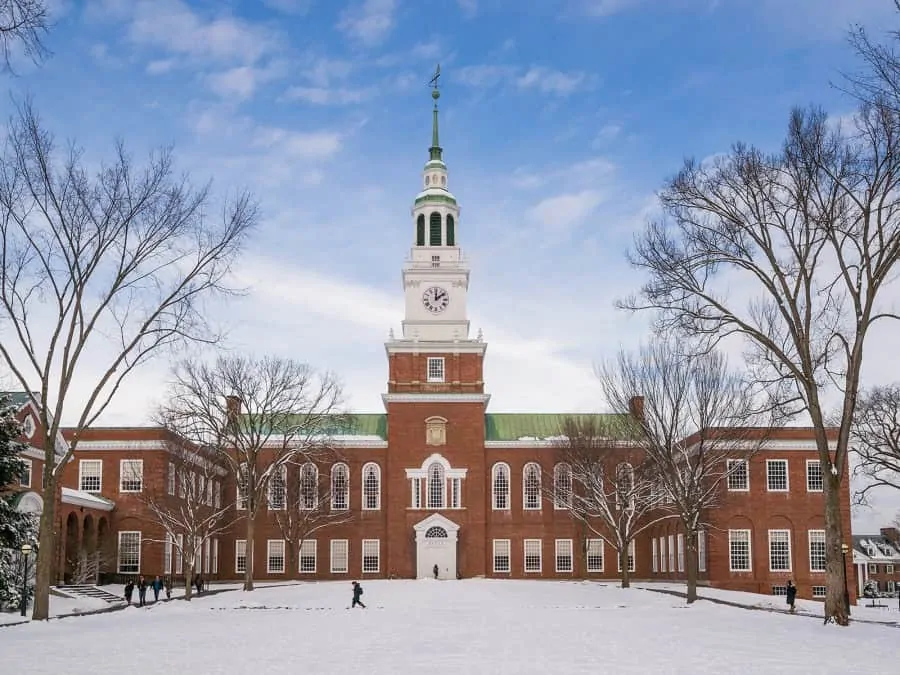
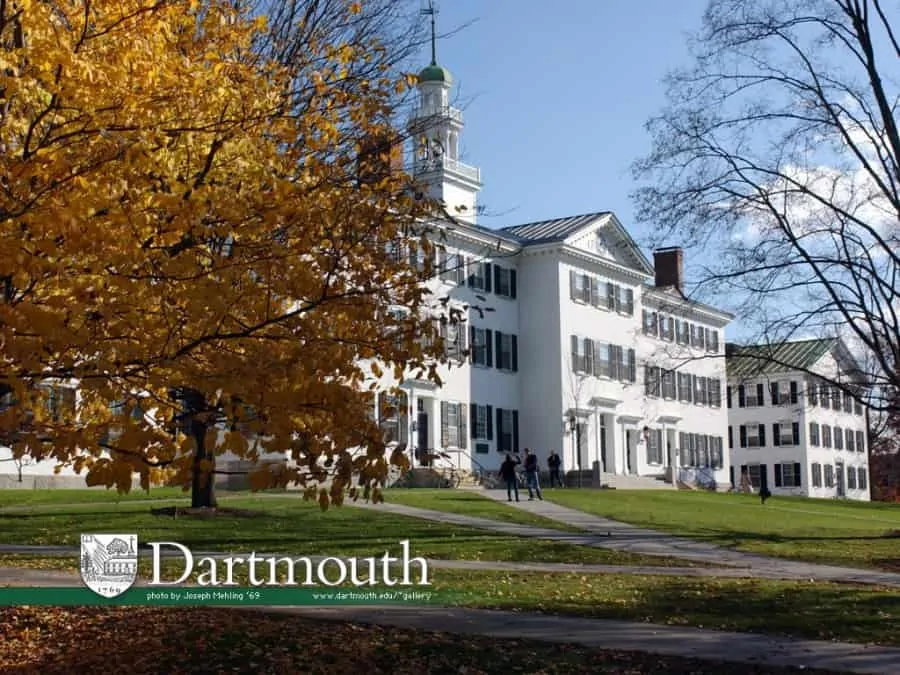
DARTMOUTH
Dartmouth is known not only for its educational excellence, but also for the famous Dartmouth College Case which today is considered one of the most important and formative documents in the constitutional history of the United States. It was Darmouth that paved the way for private academies in the US to conduct their affairs in accordance with their independent charters and without interference from Church and State.
Well known for contributing to the arts and sciences, the majority of all students who study at Dartmouth declare majors in economics, government, engineering, or brain sciences. Today more than 700 students are enrolled in the graduate programs at the school and the Geisel School of Medicine is consistently ranked as one of the world’s top medical schools pioneering advancements in technology and patient care.
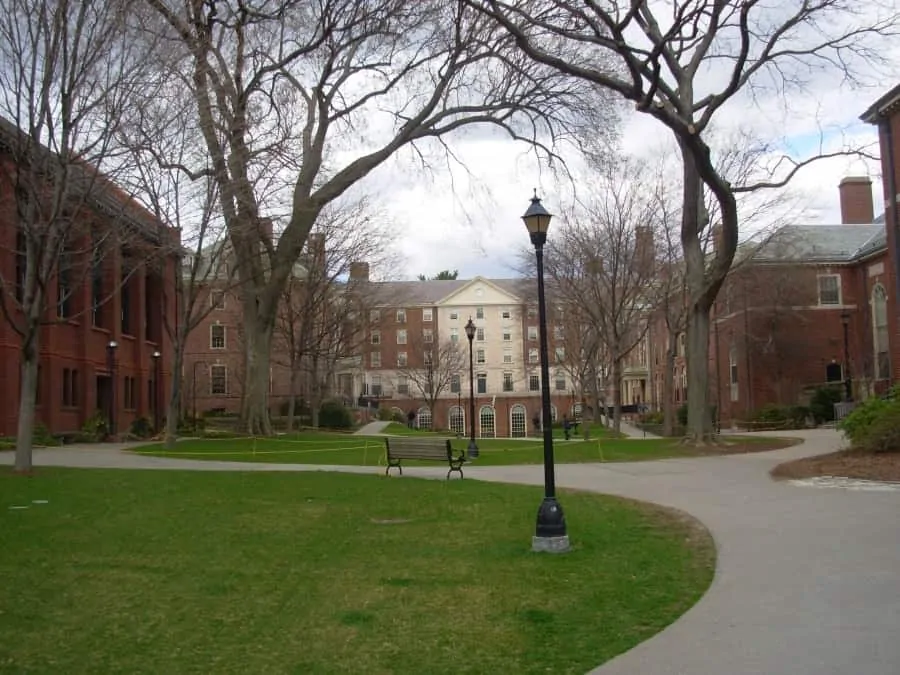
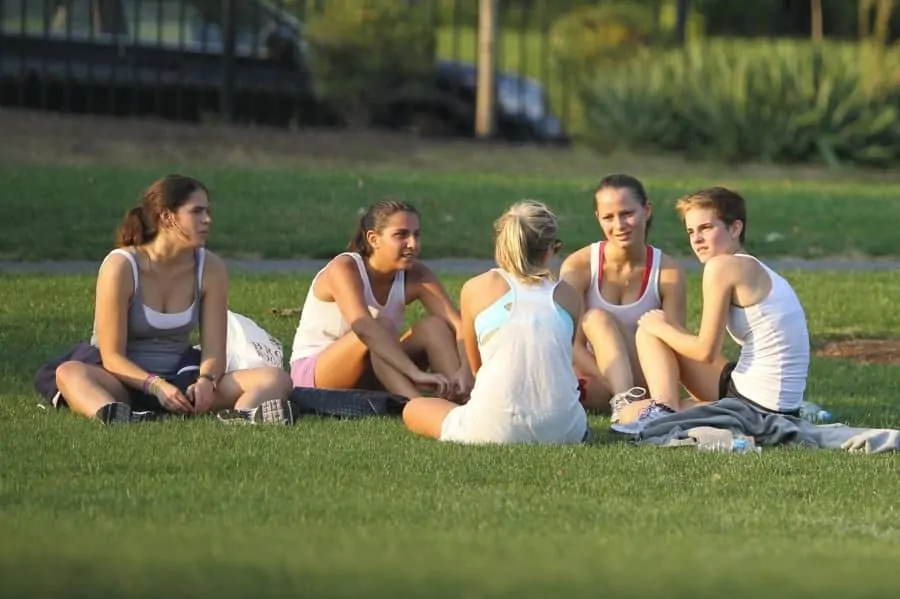
BROWN
The seventh eldest college in the US, Brown is located in Providence, Rhode Island where it has become known for its science based programs. Offering undergraduate opportunities in 75 fields of study, the saying “anything’s possible at Brown” really isn’t that far from the truth. From cognitive neurosciences to Egyptology, there is such a wide variety of options at Brown that students are often called “architects of study” due to their rapid enhancement of theory and application. In fact, in 2010, the Princeton Review named Brown the #1 College in America for the happiest student body
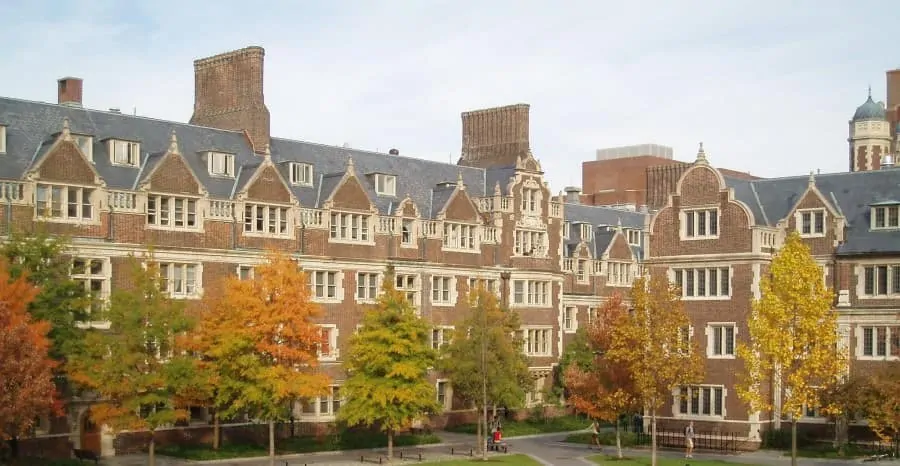
UNIVERSITY OF PENNSYLVANIA
Consistently ranked among the top 10 universities in the United States, Penn, like many others in the Ivy League are renowned for being particularly picky when it comes to their acceptance of new students. To cite an example of how rigorous their standards are, according to the administration, Penn received 31,282 applications for admission to the Class of 2017. Of those applicants, 3,830, or 12.24 percent, were offered admission. Ninety-four percent of the students admitted for Fall 2013 came from the top 10 percent of their high school graduating class.
It’s this selectivity – which is really no worse than many of the other Ivy League schools – that gives Penn its longstanding reputation of intellectual rigor and pursuit of innovative knowledge that began with none other than Benjamin Franklin in 1740.
Lesser known than some of their counterparts such as Harvard, Yale and Princeton, Penn is really just as valuable on your resume as it has one of the most supportive alumni that continues to assist new graduates with finding career placements and jobs both domestically and on the international playing fields.
Conclusion
If we look at each of the Ivy League schools overall, the top picks of the year are (in order) Harvard, Yale and Princeton which rank #2, #8 and #10 respectively on the list of the world’s top universities. The University of Pennsylvania, Columbia and Cornell rounded out the #13-15 spots with Brown trailing at #47 and Dartmouth falling off the list this year. Sorry Big Green.
Obviously, all of the Ivy League schools have their merits and their drawbacks, one of which can often be cost. Many families in America are particular to one school and generations of them have been educated at that particular school for years.
If you liked this article, you should also read The Prep Style Guide as well as Ivy Style and Take Ivy.
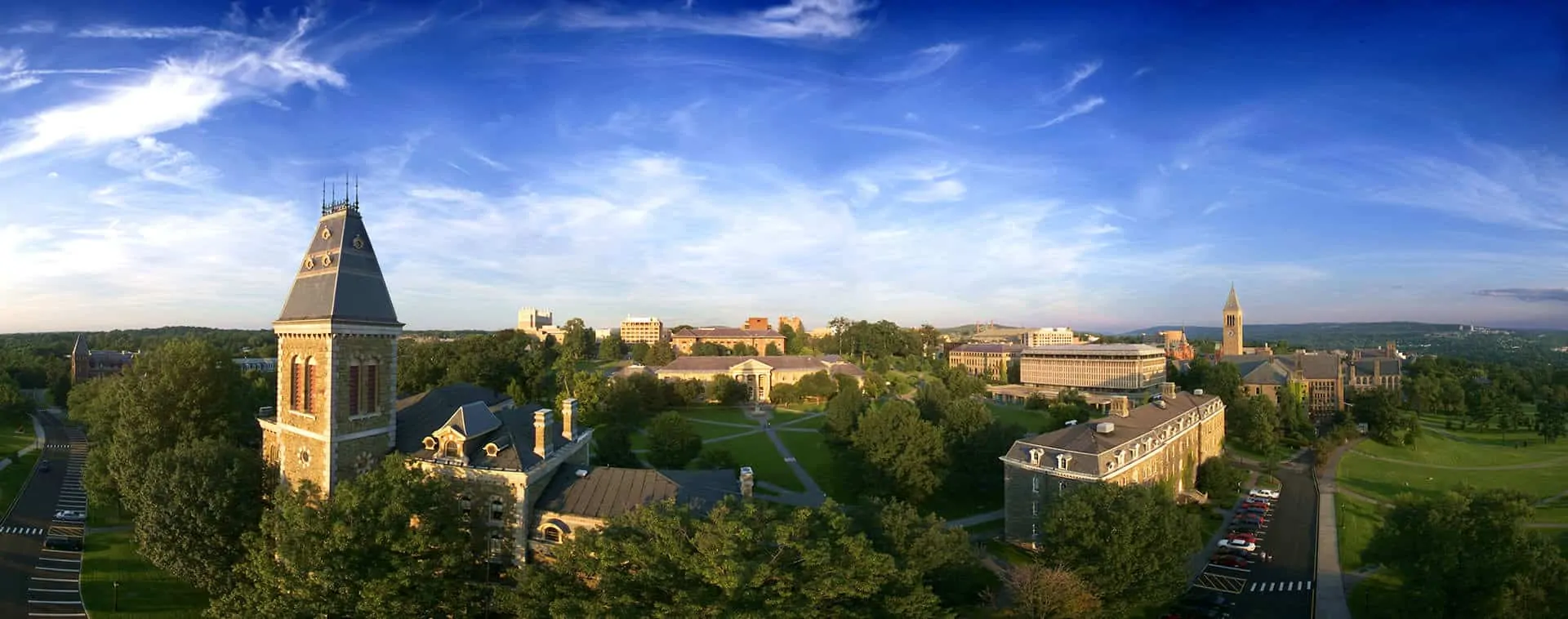
Ivy League is for kids. Gentlemen go to Cambridge.
Basketball invented in Canada? You’ve got to be kidding. It was invented by James Naismith, who was a Canadian, at the Springfield, Massachusetts YMCA, in 1891. Everybody (including the NBA) knows that. And one of my fraternity (Alpha Sigma Phi) brothers at Penn has gone on to some prominence: Warren Buffet (who doesn’t even send me a Christmas card). Intercollegiate basketball was invented at Penn, whose Palestra is called “the cathedral of basketball.” Everybody who isn’t an Ivy League graduate likes to pick on the Eight. We take it as the highest possible compliment.